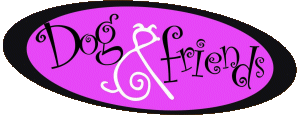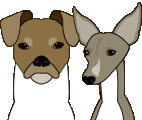THE REVERSE SNEEZE
Dog owners get frantic when they see their pet starting to "choke" or having a sudden asthma attack. Often, however, what the pets are experiencing is a "reverse sneeze," and it can happen with some regularity.

Story at-a-glance
Reverse sneezing is a common condition in small and brachycephalic dogs
In a reverse sneeze, the air is pulled forcefully in through the nose rather than pushed out
The way dogs look and sound during a reverse sneezing episode can cause their alarmed owners to rush them to the emergency animal clinic
Reverse sneezing is a benign condition that almost never requires treatment. As soon as the episode ends, the dog is back to normal
Very frequent or prolonged episodes should prompt a call to your veterinarian to rule out possible underlying causes such as a foreign body in the nasal passage or an infection
Does your dog have mechanosensitive aspiration reflex? Inspiratory paroxysmal respiration? Pharyngeal gag reflex? Does he by chance do this:
If so, he's reverse sneezing, which also goes by the medical terms listed above. But reverse sneeze is actually a much better descriptive term for what's happening than those other tongue twisters.
Reverse sneezing is a fairly common condition in dogs. It happens more often in small breeds, probably due to their smaller throats and windpipes. Pugs, Bulldogs and other brachycephalic (flat-faced) breeds have elongated soft palates and occasionally pull the palate into the throat, which can trigger reverse sneezing. The condition is very rarely seen in cats.
Appearance and Sound of a Reverse Sneeze
For some dogs, reverse sneezing is a more or less normal event. Just as sneezing is a part of life, reverse sneezing is also a part of many dogs' lives.
In a regular sneeze, air is pushed forcefully out through the nose. In a reverse sneeze, air is pulled rapidly in through the nose, and the sound is very different. The noise that accompanies reverse sneezing is typically a sudden, startling honk that makes many uninitiated dog parents think their pet is either choking or having an asthma attack or seizure.
Dogs in the midst of a reverse sneezing episode often stand still with their front legs splayed, neck extended or head back, and eyes bulging as they make a loud honking or snorting sound. It's the look and sound of reverse sneezing that often causes people to panic and rush their dog to the nearest emergency animal hospital.
Episodes of reverse sneezing can last from a few seconds to a minute or two. As soon as it passes, the dog's breathing returns to normal and he behaves as if nothing happened.
Causes of Reverse Sneezing
Reverse sneezing is caused by a spasm of the throat and soft palate. The spasm is triggered by an irritation to the throat, pharynx or laryngeal area.
Some of the most common triggers include:
Excitement
Pulling on the leash
Air freshener sprays, plug-ins
Exercise intolerance
Environmental irritants
Perfume/cologne
A too-tight collar
Household chemicals
Sudden change in temperature
On rare occasions, a respiratory infection, chronic post-nasal drip, nasal polyps (small, non-cancerous growths in the nasal passage) or other masses or foreign bodies (e.g., foxtails) cause the condition.
Some dogs seem to reverse sneeze when there's a sudden change in temperature, either coming inside or going outside. In fact, my sweet Boston Terrier, Rosco, used to reverse sneeze every time he went outside in cold weather. I'd open the front door and right on cue, he'd reverse sneeze!
How to Help a Reverse-Sneezing Dog
Reverse sneezing rarely requires treatment. As soon as the sneezing stops, the situation is resolved, but since these episodes can make your dog anxious, it's important that you remain calm. If you flip out each time she reverse-sneezes, you can actually condition her to panic when it happens.
If you feel the need to do something for your dog, you can try massaging her throat to stop the spasm. You can also try covering her nostrils very briefly. This will cause her to swallow, which usually helps clear the irritation and stop the sneezing:
If the episode doesn't end quickly and if you trust your dog's response, you can try putting your hand in her mouth and pressing on her tongue. This will cause her to open her mouth wider and help move air through the nose effectively.
The truth is, these types of interventions are usually unnecessary and can even add to your dog's stress (and yours). I do recommend you pay attention to when the reverse sneezing occurs, where your dog is and what she's doing right before or as it begins. If you can identify the triggers for her reverse sneezing episodes, you can work to reduce or resolve the problem.
When to Make an Appointment With Your Veterinarian
If the reverse sneezing becomes a chronic problem, or episodes are becoming more frequent or longer in duration, I recommend making an appointment with your vet to rule out things like a potential foreign body in the respiratory tract, a collapsing trachea, nasal cancers, polyps or tumors, nasal mites, kennel cough or a respiratory infection.
If you're able to videotape your dog during an episode, it can help your vet determine whether it's reverse sneezing or perhaps something else. If your dog is experiencing prolonged episodes of reverse sneezing, any sort of discharge from the nose or other respiratory problems, it's also time to make an appointment with your veterinarian.
And if you happen to have a kitty who's experiencing episodes of reverse sneezing, since the condition is less common in cats, it's important to investigate the possibility of feline asthma or an upper respiratory infection. Just as dogs sneeze intermittently throughout their lives, most dogs have at least a few reverse sneezing episodes as well. In the vast majority of cases, the episodes resolve on their own and leave the dog no worse for wear.
By: Dr. K. Becker
Example of a dog with a reverse sneeze.
https://www.youtube.com/watch?v=OMwbkggmZwU



























